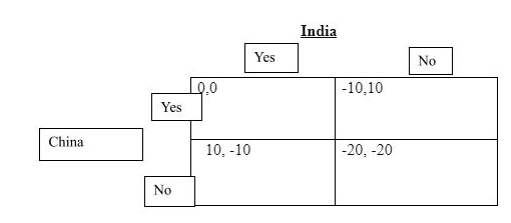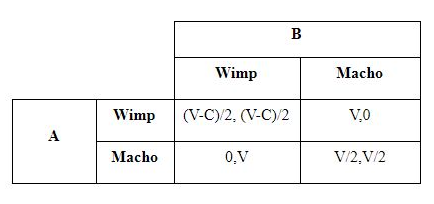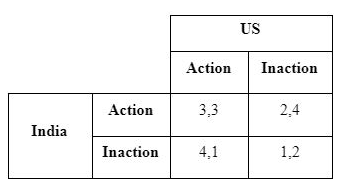As China continues to recover from COVID- 19, the city where this deadly global pandemic originated is stepping up Ship production for military and commercial purposes. In Wuhan, a company called Wuchang Ship Ltd. was established 10 years ago on 3.3 sq. kms. Area. This factory in the central Chinese industrial hub has started turning out submarines, for Pakistan for military purposes. Thailand, incidentally, has postponed the order for two S-26 T submarines, Barely having come out of the COVID-19 threat, China has again started posing serious security challenges and being aggressive in the South and the East China Sea. In March itself, the US and China Military aircraft were spotted flying near Taiwan’s Airspace. US RC-135U combat was flown to combat the Chinese Posturing. Taiwan says several Chinese J-11 Jet fighters, KJ-500 early warning aircraft and H-6 bombers were monitored flying over waters southwest of Taiwan and then entering Bashi Channel near Taiwan and the Philippines. Chinese aggression did not stop there, by mid-April, the Chinese independently developed AG-600 large amphibious aircraft, conducted test flights over the South China Sea, code-named Kunlong AG-600 is the world’s largest amphibian Aircraft. PLA-N has also joined this exercise.
In an unusual show of unity against China, south-east Asian nations have been pushing back on China over the sinking of a Vietnamese fishing vessel near Parasail Island. Malaysia and the Philippines have joined the US on a month-long stand-off there.
Chinese movement in the South China Sea is definitely a cause of concern and nations wanting to protect sea lines of communication need to join together.
Further, the Chinese Liaoning Aircraft carrier group was noticed in cross-regional mobilization- Flotilla led by the aircraft carrier crossing through Miyako Strait, Bashi Channel and entering South- China Sea was traced. Japan says, “Liaoning Aircraft carrier two Type 052D guided-missile destroyers, two Type 054A guided-missile frigates and one Type 901 auxiliary supply ship are heading towards the Pacific Ocean”. As a counter, the US has also sent an amphibian assault ship and a guided-missile cruiser to the site of an ongoing survey by a Chinese vessel in Malaysian water. Chinese vessel Hi Yand Di Zhi 8 arrived in Malaysian waters on 16th April 2020. The Chinese vessel is currently accompanied by two China Coast Guard Ships, Zhongguohaijng 4203 and 1105 with shadowing supply ships supporting west Capella according to vessel-tracking software. The vessel currently has also entered Malaysian and Brunei Exclusive Economic Zones.
HMAS Paramatta (FFG154) sailing with Ticonderoga class guided-missile cruiser, USS Bunker Hill (CG52) with amphibious assault ship USS America (LHA6) and Arleigh Burke-class guided-missile destroyer USS Barry (DDG52) operations have also started. Operations with Paramatta have included 5 exercises, coordinated helicopter exercises, small boat force protection drills, command and control integration and manoeuvring interoperability is in force. Meanwhile, China’s Hudong Zhonghua Shipyard is expected to launch a new ship – China’s Second Type 075 amphibious assault ship mastering mature technology. Master’s vertical deployment and landing mission on islands and reefs like the Island of Taiwan and the South China Sea. These warships with large Flat flight decks can transport troupes vertically via helicopter much faster than using horizontal means.
In December 2019, a Chinese naval ship had entered Indonesia EEZ. On warning of Indonesia coastguard, the ships turned back and the Chinese authorities proposed a strategic partnership with Indonesia. Chinese sinister designs in the South China Sea are well known. The countries like Japan, Vietnam, South Korea, Indonesia, Thailand, Philippines need to come closer and form alliances to block China’s expansionist and coercive policies. India definitely has a larger role in this regard.
Here there are some assumptions and a conclusion.
1. In absence of central authority, the world system is anarchic;
2. Every nation has some offensive and defensive capacity;
3. Nations want to propagate their own interests;
4. It is easier to know the capability of other nations but not intention;
Under the circumstances, every nation would like to acquire power and this power has to be more than any other power in the region. The nation which wants to be a global power would not like any other peer power in this region as otherwise, the revisionist power would get entangled in the region itself. Hence, China would not like to accommodate India.
The gap between the total power of the US and China is reducing. The inflexion point has already reached. As a result of which the relationship is likely to remain strained. In future, Chinese soft power and economic power is likely to erode. However, China is likely to flex muscles of hard power and cheque-book diplomacy. Chinese foreign policy is more coercive. As per Ludwalk, Chinese Diplomacy is not likely to be successful in the long run, if the balancing act is not excised then bandwagoning may take place, i.e. out of sheer fear some smaller nations may toe China’s line. India, therefore, needs to re-define its role in the region and adapt graded response, while ensuring no leaning towards any super-power and maintaining complete autonomy in foreign policy.
If India is to play her rightful role and China insists on dabbling in the Indian Ocean and Arabian sea, balancing is essential unless band-wagoning will take place.
It is on this background that India-China Ladhak Logjam began. We are all aware of what happened in Galwan and Pangong Tso. What is significant is the Indian action thereafter.
Theoretical Construct
Consider a classic game of brinkmanship about limited war.
India

If both withdraw, the payoff would be 0 each. If India withdraws and China does not, it would be -10, 10 and reverse is true if China Withdraws and India does not. But, if no one withdraws, both would have a payoff of -20 each. As the game begins, both are eyeball to eyeball at each other and none wants to withdraw. At this time, India converted this simultaneous game into a sequential game.
1. According to Harvard Kennedy School Belfer Centre conventionally, India is in a better position due to experience in high altitude, deployment of ground forces and air defense.
2. US, Australia and Japan showed solidarity with India. US even deployed 2 ships in east- China Sea
3. South China Sea rim nations showed support to India.
4. Nepal went closer to China, but the Prime Minister Oli, faced heat domestically.
5. Raksha mantri went to Russia and Air force was further strengthened.
6. Ground forces near LAC were further fortified.
7. Core Commander level negotiations were on and diplomatic channels were open.
8. And the most important was Prime Minister Modi’s visit to LAC forward areas. What it meant was, India is making irrevocable commitment to stay and even the Prime Minister staked his personal prestige to this. This resolve showed that India is ready to face any eventuality to protect her sovereignty.
9. It is at this stage that the core commander level talks were successful and disengagement started.
10. What it means is now, India can provide leadership to the smaller nations in this region and new global order may emerge.
Theoretical construct:
Chicken Game:
Remember our 1950s youths racing their cars towards one another and seeing who will be the first to swerve to avoid a collision? Now we suppose the players have no choice in the matter” each is genetically hardwired to be either a Wimp (always swerve) or a Macho (always go straight). The population consists of a mixture of the two types. Pairs are picked at random every week to play the game. The figure below shows the payoff table for any two such players – say, A and B..
To find the proportions of Wimps and Machos in such as ESS, let us calculate the fitness of each type in a general mixed population. Write x for the fraction of Machos and (1-x) for the proportion of Wimps. A Wimp meets another Wimp and get 0 for a fraction (1-x) of the time and meets a Macho and gets -1 for a fraction x of the time. Therefore the fitness of a Wimp is 0 x (1-x) – 1 X x = -x. Similarly, the fitness of a Macho is 1 X (1-x) – 2x = 1 – 3x. The Macho type is fitter if
1-3x>-x
2x<1
X<1/2.
If the population is less than half Macho, then the Machos will be fitter and their population will increase. On the other hand, if the population is more than half Macho, then the Wimps will be fitter and the Macho proportion will fall. Either way, the population proportion of Machos will tend towards ½, and this 50-50 mix will be the stable polymorphic ESS.

The Hawk-Dove Game
The game is played not by birds of these two species, but by two animals of the same species, and Hawk and Dove are merely the names for their strategies. The context is competition for a resource. The Hawk strategy is aggressive and fights to try to get the whole resource of value V. The Dove strategy is to offer to share but to avoid a fight. When two Hawk types meet each other, they fight. Each animal is equally likely (probability ½) to win and get V or to lose, be injured, and get –C. Thus the expected payoff for each is (V –C)/2. When two Dove types meet, the latter retreats and get V/2. When a Hawk type meets a Dove type, the latter retreats and gets a 0, whereas the former get V.

The analysis of the game is similar to that for the prisoners’ dilemma and chicken games, except that the numerical payoffs have been replacing by algebraic symbols. We will compare the equilibria of this game when the players rationally choose to play Hawk or Dove and then compare the outcomes when players are acting mechanically and success is being rewarded with faster reproduction.
Rational Strategic Choice and Equilibrium
1. If V> C, then the game is a prisoners’ dilemma in which the Hawk strategy corresponds to “defect” and Dove corresponds to “cooperate.” Hawk is the dominant strategy for each, but (Dove, Dove) is the jointly better outcome.
2. If V< C, then it’s a game of chicken. Now (V-C)/2 <0 and so Hawk is no longer a dominant strategy. Rather, there are two pure – strategy Nash equilibria : (Hawk, Dove) and (Dove, Hawk). There is also a mixed – strategy equilibrium, where B’s probability p of choosing Hawk is such as to keep A indifferent:
p(V-C)/2 + (1-p)V = pX0 + (1 – p) V/2
p = V/C.
Analysis
China – a hawkish player would be better off maintaining this position as long as others play a Dove. But if other nations say, India plays Hawk, both would be better off moving aside. Thus how India continues to remain firm, more and more hawkish players would emerge, till the time Dove strategy becomes evolutionarily stable strategy. But, as today there are far more Doves than Hawks, India should not move aside even in future logjams.
Countering opponents strategic moves:7
1. Irrationality: It could work in both the cases
2. Cutting off communication: If India cuts off communication; active or passive to threats given by say, Global Times, if would work.
3. Leaving escape routes open: in this case the threatening side can move aside.
4. Undermining the opponents motive to uphold his reputation
5. Salami tactics: Do not comply with other wishes to a small degree at a time
Joint US-India Political Action
We consider here an example of the US and India contemplating, how to tame the dragon. Each country would like the other to take on the whole burden of action against China. So, the top-right sale has the best pay-off for the US (4) and the bottom–left sale is best for India. The worst situation for India is where no action is taken as it finds increased threat to be unacceptable. For the US, however, the worst outcome arises when it takes on the whole burden of action because the cost of action is higher. Both regard joint involvement as a second-best (3 each). India assigns a pay-off of 2 to the situation in which it is the only one to act. And for the US, the pay-off of 2 is assigned to the case, in which no action is taken. Without any strategic moves, the intervention game is dominance solvable. Inaction is the dominant strategy for the US and then action and then action is the best vehicle for India. The equilibrium outcome is the top-right cell with payoffs of 2 for India and 4 for the US. But the US gets its best outcome, it has no reason to try any strategic moves. But India can try to do better than a 2.
An unconditional commitment will not work, because the US will respond with inaction to either first move by India. The threat alone does not work because any implied promise is not credible- If the US does act, India would prefer to back – off and leave everything to the US getting a payoff of 4, instead of the 3 that would come from fulfilling the promise. A promise alone does not work because the US knows that India will intervene if the US does not. An Indian promise of, “We Will Intervene if you do” becomes tantamount to a simple commitment to intervene. Then the US can stay out and get its best pay-off of 4. In this game, an exquisite promise from India must carry an implied threat – “We won’t take action if you don’t”. But, that threat is not automatically credible. Similarly, India’s exquisite threat must carry the implied promise- “We will cat if you do.”. But, that is not automatically credible either. Usually, such credibility can be achieved through a treaty that covers the whole relationship and negotiated agreements.

As the waters in the South China Sea is hotting up, India needs to take a definitive stand and assert to play a larger role. 55% of India’s trade passes through this area and India is committed to the free and fair passage, through this route. The following majors need to be scrutinized:
1. Renew Quad
2. The time is ripe to reach out to other nations in the region under project SagarMala
3. Act as the net security provider in this region.
4. Strengthen defense ties with Vietnam, South Korea, Indonesia.


